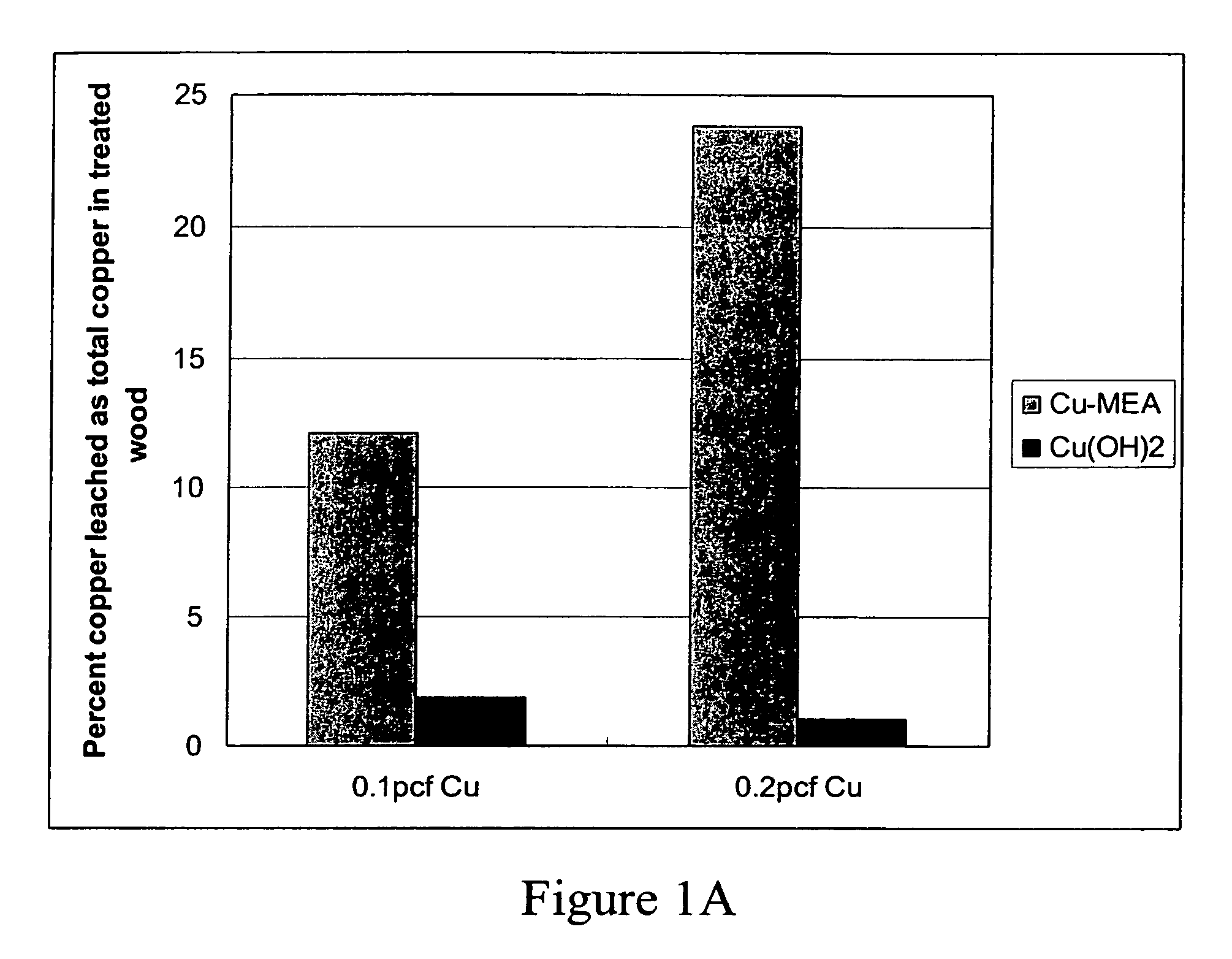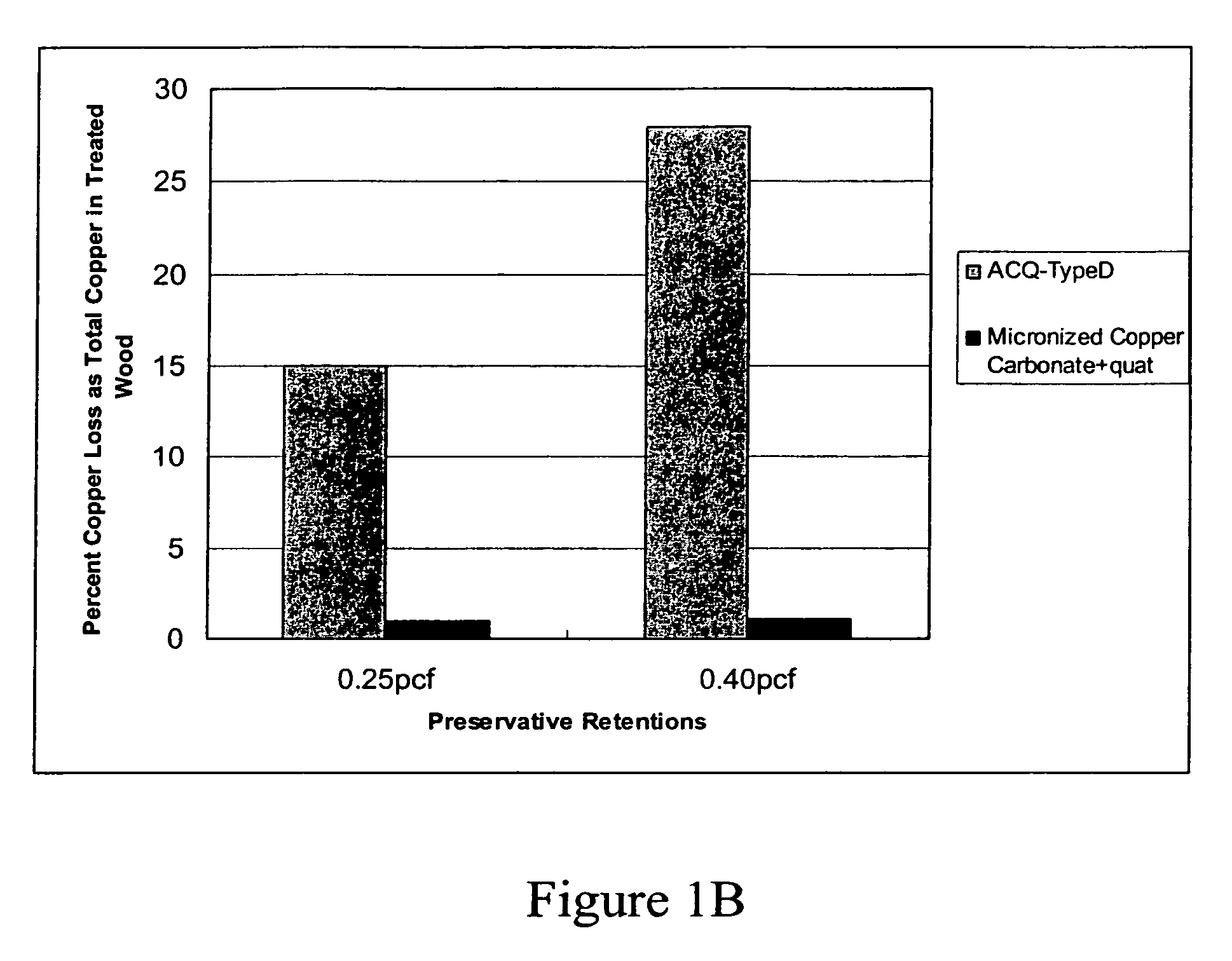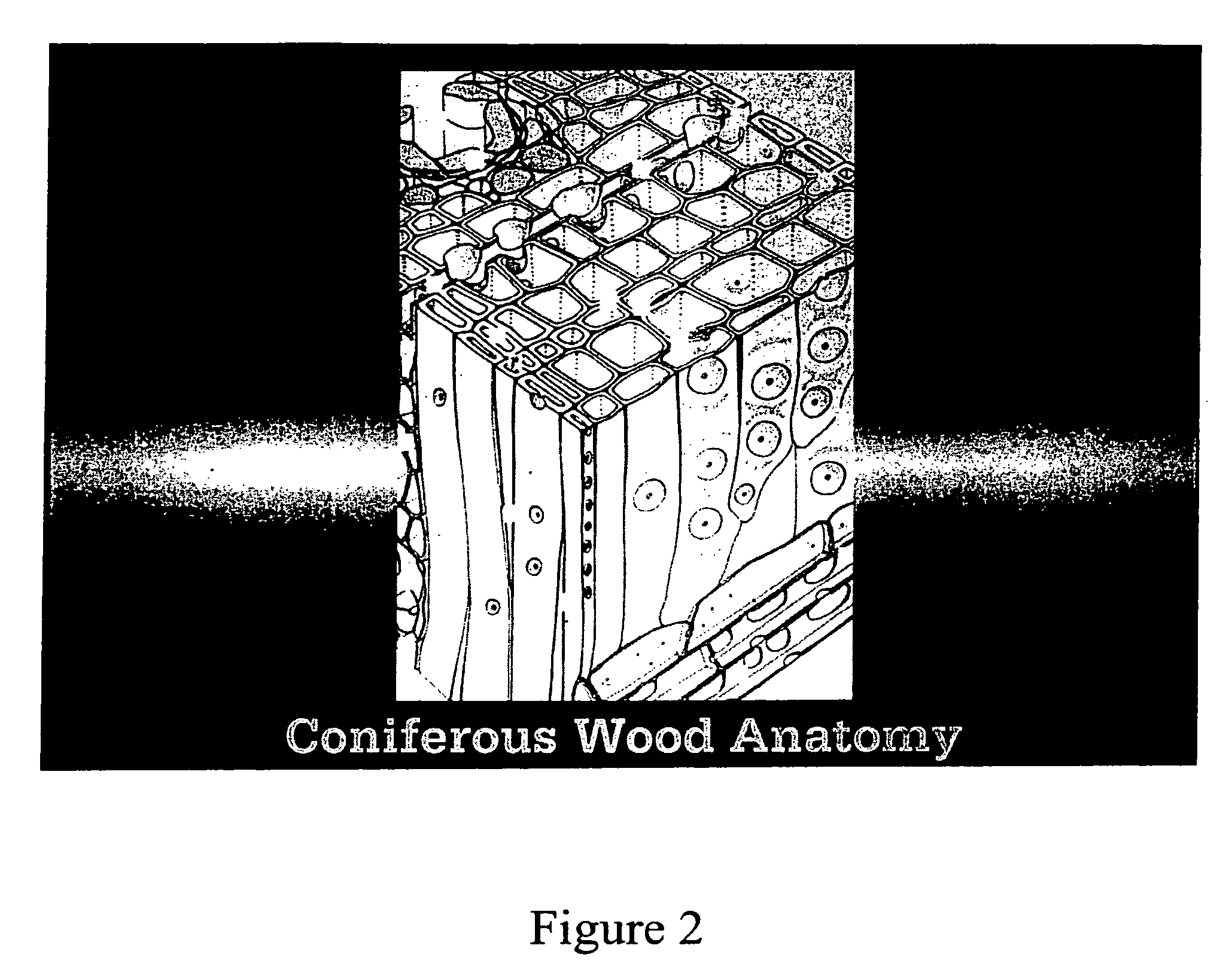Micronized wood preservative formulations
a preservative and micro-organism technology, applied in the field of micro-organismized wood preservative composition, can solve the problems of high copper loss of copper-amine based preservatives, affecting the appearance of treated wood, so as to reduce the size of particle aggregates, prevent flocculation, and high affinity
- Summary
- Abstract
- Description
- Claims
- Application Information
AI Technical Summary
Benefits of technology
Problems solved by technology
Method used
Image
Examples
example 1
[0076]500 g of copper hydroxide were added to a container containing 1091.7 grams of water and 75.0 grams of commercially available dispersants / wetting agents. The mixture was mechanically stirred for 5 minutes and then placed in a grinding mill. The sample was ground for about 30 minutes, and a stable dispersion containing about 30% copper hydroxide was obtained. The particle size of the copper hydroxide dispersion was analyzed by Horiba LA-910 Particle Size Distribution Analyzer (PSDA). The average particle size was 0.195 micrometers (um) with a distribution range of 0.04 μM to 1.5 um.
example 2
[0077]1000 grams of basic copper carbonate was mixed with 2158.3 grams of water and 175.0 grams of commercially available wetting agents / dispersants. The mixture was mechanically stirred for 10 minutes. The mixture was then placed in a grinding mill and ground for about 20 minutes. A stable dispersion was obtained with an average particle size of 0.199 micrometers.
example 3
[0078]1000 grams of basic copper carbonate and 20 grams of tebuconazole were mixed with 3780 grams of water and 200 grams of wetting agents / dispersants. The mixture was mechanically stirred for about 10 minutes. The mixture was then placed in a grinding mill and ground for about 30 minutes. A stable dispersion containing 25% basic copper carbonate and 0.5% tebuconazole was obtained with an average particle size of 0.200 micrometers.
PUM
| Property | Measurement | Unit |
|---|---|---|
| diameter | aaaaa | aaaaa |
| diameter | aaaaa | aaaaa |
| weight ratio | aaaaa | aaaaa |
Abstract
Description
Claims
Application Information
 Login to View More
Login to View More - R&D
- Intellectual Property
- Life Sciences
- Materials
- Tech Scout
- Unparalleled Data Quality
- Higher Quality Content
- 60% Fewer Hallucinations
Browse by: Latest US Patents, China's latest patents, Technical Efficacy Thesaurus, Application Domain, Technology Topic, Popular Technical Reports.
© 2025 PatSnap. All rights reserved.Legal|Privacy policy|Modern Slavery Act Transparency Statement|Sitemap|About US| Contact US: help@patsnap.com



